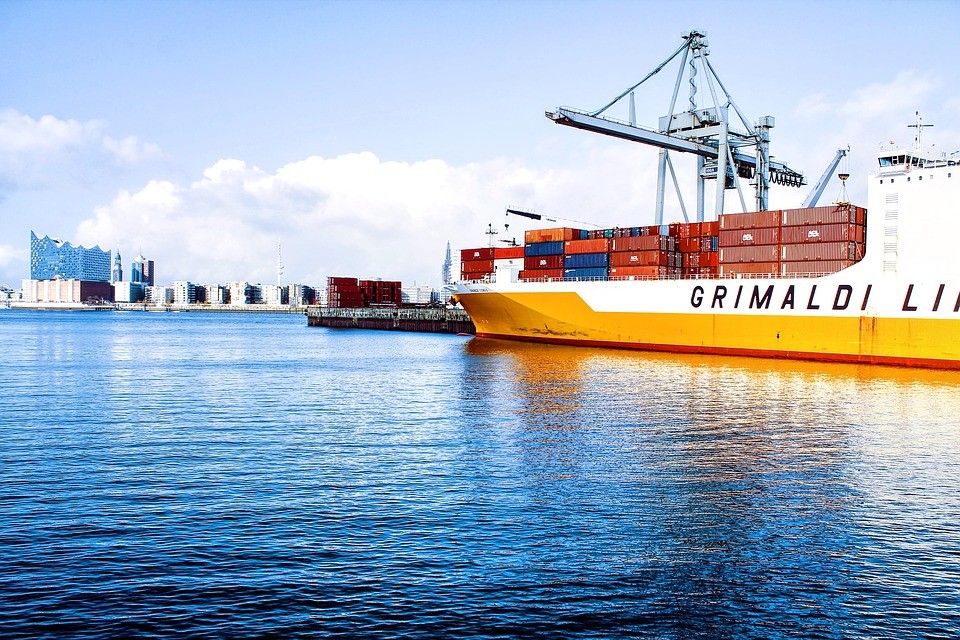On January 1, IMO regulations will come into effect and kick off a shift to lower sulfur marine fuels. The new regulations require marine fuels to have a sulfur content of 50 ppm, down from the current standard of 350 ppm.
In practice, that means the ships are now beginning to start cleaning out their tanks of the old fuel, and so the market should start reflecting the new demand for low sulfur marine fuels.
Some ships are going to be able to use sulfur heavy fuel oil (SHFO) if they’ve managed to outfit themselves with a scrubber— but only around 5% of total TEU capacity is estimated to be scrubber fitted. The rest are soon going to have to switch to either low sulfur fuel oil (LSFO) or very low sulfur fuel oil (VLSFO) or marine gasoil (MGO).
This has caused a frenzy of concerns is many directions. Some analysts are predicting huge spikes in the price of diesel. Others argue that the market indicates little change. Some are predicting a shortage in diesel; others a shortage in capacity. So, what’s the reality behind all the noise? Let’s look at both sides of the argument.
IMO 2020 will be a big deal
Analysis by Drewry Shipping Consultants suggests that container shipping lines will try to pass on extra fuel costs caused by the rule– right now it’s estimated that box shipping lines will face an additional $11 billion fuel bill next year due to the switch. At Asian ports, prices for low-sulfur compliant fuel are already about 30% more than the current high-sulfur fuel.
If shippers won’t foot the bill, carriers will likely make major cuts to service levels.
It’s not just marine fuel users that need to be worried, though. Diesel prices are vulnerable to a spike in price for 2 reasons:
- Many ship owners will probably turn to marine gasoil. Demand for MGO can divert diesel from the road market to the marine market.
- An intermediate product called vacuum gasoil (VGO), which can be used to produce diesel or other types of fuel is expected to be diverted into making very-low-sulfur fuel oil.
At the same time, the drastic drop in demand for HSFO will likely cause prices for HSFO to drop– IEA predicts a 57% drop in demand. Prices will likely stabilize down the line. In the meantime, traders betting on this drop-then-rise (called a contango) may seek to physically store HSFO and sell it in the future. Land-based HSFO storage is dwindling, so they may choose to store it in tankers, reducing the number of tankers available for normal trading and increasing freight rates.
This means that the problem is not simply higher rates for shippers: the fear is that there will be a sudden and en masse switch to low-sulfur fuel, causing refineries to use their capacity to produce more marine fuel, causing fuel prices to surge for ships, trucks, trains, and airplanes.
IMO 2020 won’t be a big deal
On the other hand? Diesel markets haven’t been showing much movement.
The spread between Brent crude and other types of fuel– marine fuel, marine gasoil, ultra-low-sulfur fuel– don’t show a lot of change compared to a year ago, according to records kept by S&P Global Platts.
In fact, OPEC has increased its output to fill the gap between global demand and non-OPEC production. This has caused the International Energy Agency (IEA) to change its tune: their latest monthly oil market outlook admits that “the start of the IMO 2020 implementation could be much smoother than expected” and that “The oil market is likely to be better supplied than we thought.”
Additionally, some shipping companies have been pre-buying compliant fuel and storing it for future use. Industry players have about 35 million barrels in storage, with the number rising as we approach January.
In short: the global refining system should be able to handle the increased demand for MGO and VLSFO without diesel production suffering. There’s spare capacity. And in fact, the price of diesel has been falling– it’s down about 11% since May.
Why the confusion?
All this tells us that what we really need is not diesel, but transparency.
Shippers and forwarders are expressing confusion over the timing and transparency of new charges introduced by container lines as they phase in low-sulfur fuels. Shippers are aware they should expect a cost increase. Drewry predicts bunker adjustment factors (BAFs) “will soar between 4Q19 and 1Q20.” But that increase should be justified with credible and trusted mechanisms.
At least one line has already begun to levy an additional low-sulfur fuel charge of $100 per TEU. Another is reportedly planning to issue one between $120 – $180 for the Asia – Europe route. For trans-Pacific, there’ve been suggestions of $164 – $375 for the West Coast, and for the East Coast, as high as $625. How can lines set these surcharges when low-sulfur fuel prices haven’t panned out yet? They may be trying to prepare shippers for those costs when they do arrive. One shipper argued that “shipping lines are trying to scare shippers about high increases for the bunker surcharges coming with the new regulation so that when we are deeper into the fourth quarter, we will be more prepared to accept these surcharges.” In short, this kind of panic-mongering might just benefit the lines– and shippers should, like the diesel markets so far, remain steady.
Your Trusted Partner
Red Arrow provides expertise and white glove customer service with fast-growing, complex, and high-value supply chains. As the next-generation model of logistics companies, Red Arrow offers tailored transportation and logistics solutions – from single shipments to complex over-dimensional and international orders.
Red Arrow offers the scale and scope of services including air, ocean, and ground transportation to meet the budget and schedule requirements of the largest and smallest companies alike. If we can be of assistance, please email me at liz.lasater@redarrowlogistics.com or give us a call 425-747-7914.





